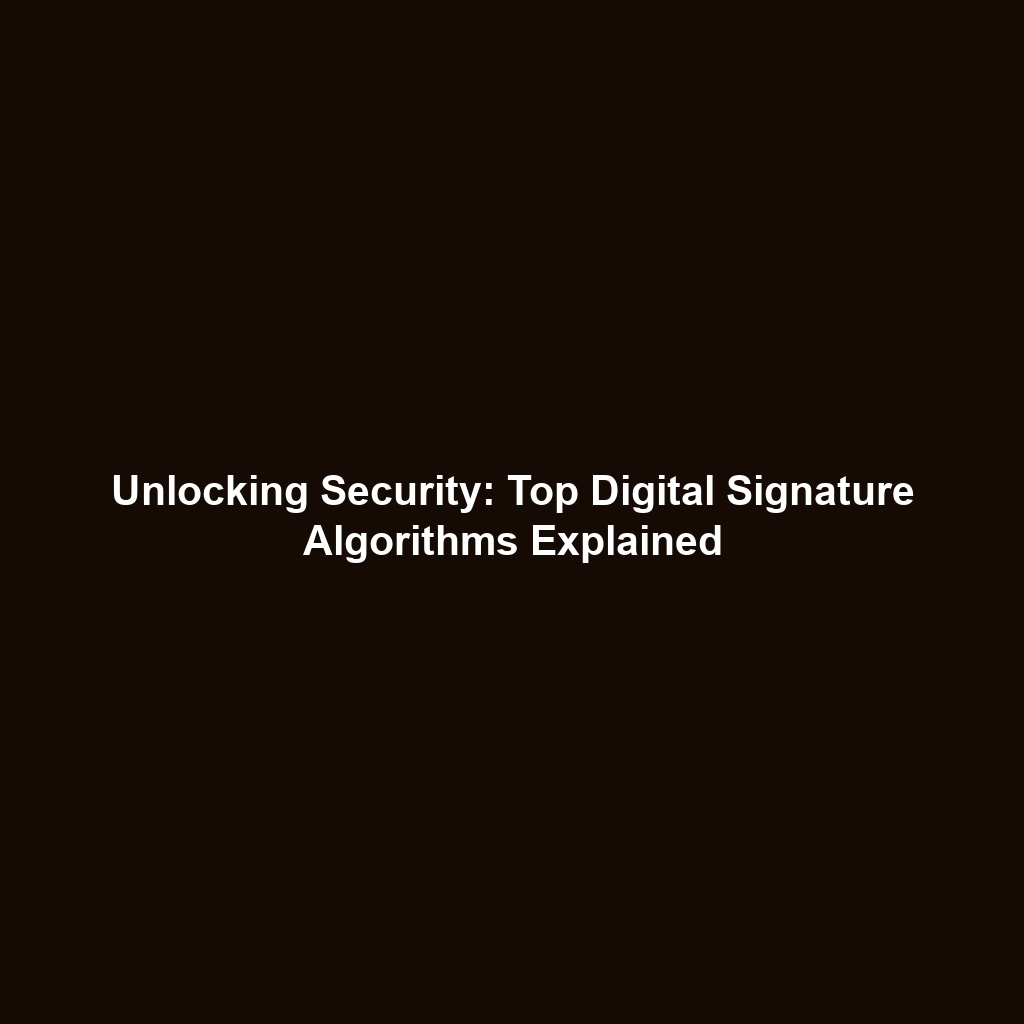What is ECC?: An Asymmetric Encryption Technique Based on Elliptic Curve Mathematics
Introduction
Elliptic Curve Cryptography (ECC) is a modern approach to asymmetric encryption, leveraging the complex mathematics of elliptic curves to provide robust security solutions. As the demand for secure communication rises in our digital age, ECC stands out as it offers equivalent security to traditional RSA algorithms—yet with significantly smaller key sizes. This characteristic not only enhances security but also optimizes performance, making ECC a vital component of contemporary cryptographic practices. In this article, we will delve into the framework of ECC, its applications, challenges, and future potential in the realm of cryptography.
Key Concepts of ECC
Understanding ECC requires familiarity with several key concepts:
- Elliptic Curves: Math curves defined by equations that allow point addition and multiplication operations, forming the foundation of ECC.
- Asymmetric Encryption: A type of encryption where different keys are used for encryption and decryption, enhancing security.
- Key Size vs. Security: ECC provides a comparable level of security to RSA but with significantly shorter keys, making it efficient.
By utilizing these principles, ECC fits seamlessly into the broader category of cryptography, offering solid protection while maintaining superior performance.
Applications and Real-World Uses
The applications of ECC in cryptography are vast and impactful:
- Secure Communications: ECC is widely implemented in secure messaging protocols, providing robust encryption for emails and instant messages.
- Mobile Devices: Many smartphones utilize ECC for secure connections and transactions thanks to its lightweight key requirements.
- Blockchain Technology: ECC secures cryptocurrency transactions offering enhanced security without heavy computational demands.
These applications showcase how ECC is utilized in cryptography, providing real-world solutions that meet modern security needs.
Current Challenges
Despite its advantages, several challenges persist in the adoption and application of ECC:
- Complexity of Implementation: Implementing ECC can be more complex than traditional methods, requiring specialized knowledge.
- Standardization Issues: Variability in implementations can lead to compatibility challenges.
- Adoption Resistance: Resistance from organizations accustomed to RSA may hinder broader ECC adoption.
These challenges highlight the issues in advancing ECC within the cryptographic landscape.
Future Research and Innovations
The future of ECC is promising, with ongoing research exploring innovative applications:
- Post-Quantum Cryptography: Researchers are investigating ECC’s role in developing cryptographic systems resistant to quantum computing threats.
- Enhanced Performance Algorithms: Work towards optimizing the performance of ECC algorithms to meet the demands of high-speed communication.
Such innovations signify that ECC will play a critical role in the future of cryptography.
Conclusion
In summary, ECC represents a significant advancement in asymmetric encryption techniques, merging the intricacies of elliptic curve mathematics with practical cryptographic applications. Its ability to deliver equivalent security to RSA with smaller key sizes positions it as a vital tool for securing digital communications. As research progresses and challenges are addressed, ECC is likely to become even more prominent in cryptographic practices. For further exploration of cryptographic techniques, consider reading about Symmetric vs. Asymmetric Encryption and Applications of Blockchain Technology.





